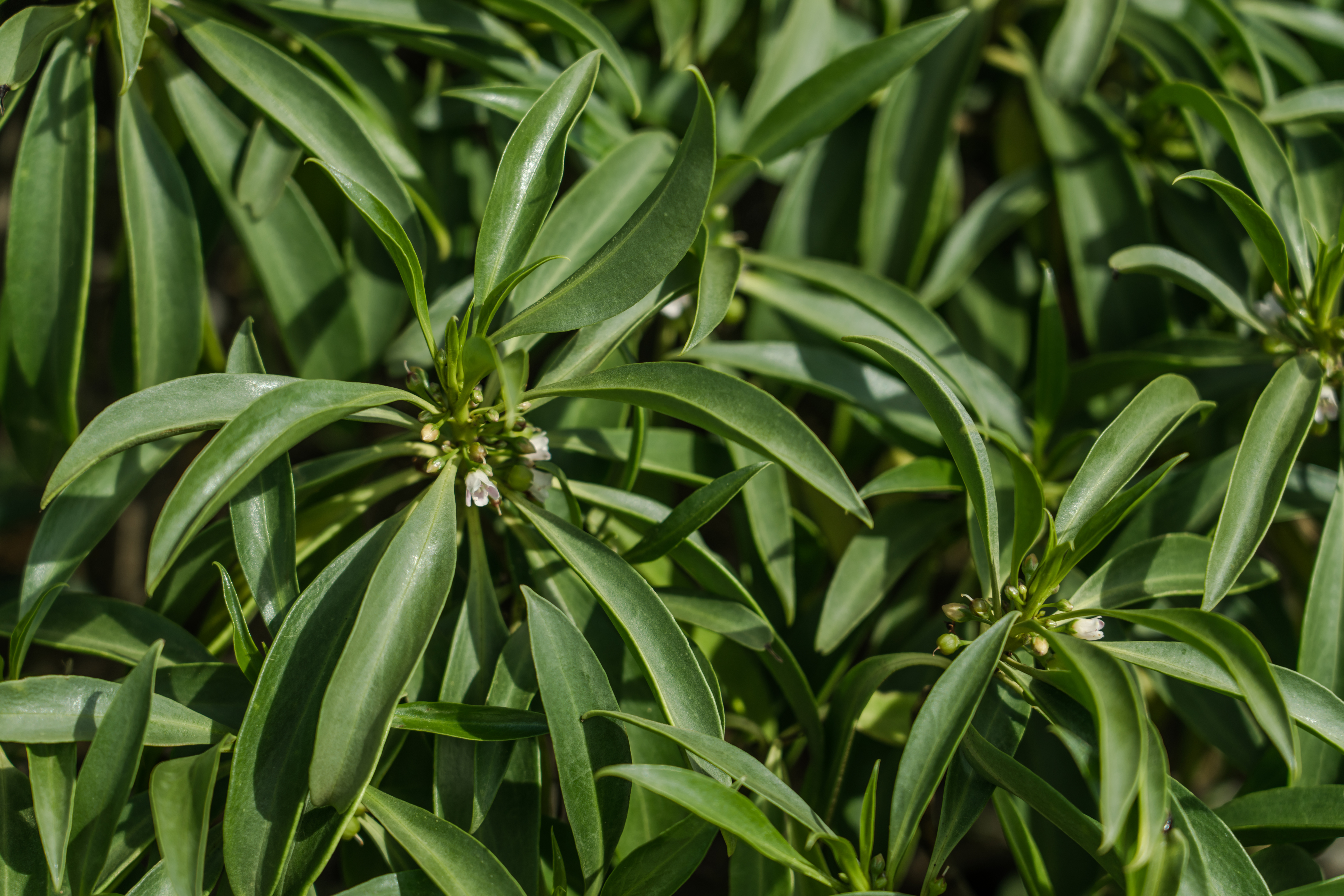Naio
(Myoporum sandwicense)

Description
Myoporum sandwicense, commonly known as naio, bastard sandalwood or false sandalwood is a species of flowering plant in the figwort family, Scrophulariaceae. It is a tree or shrub highly variable in its form, the size and shape of its leaves, in the number of flowers in a group and in the shape of its fruit. It is endemic to Hawaiʻi. Myoporum sandwicense grows as either a small tree, large tree, or dwarf shrub, depending on the elevation and conditions. As a small tree, it reaches a height of 9 metres (30 ft) with a trunk diameter of 0.3 metres (0.98 ft). The largest naio have a height of 18 metres (59 ft) and a trunk diameter of 0.9 metres (3.0 ft). At the tree line, naio grows as a 0.6-metre (2.0 ft) shrub. The bark on older specimens is often dark, rough and furrowed. The leaves are arranged alternately, often crowded near the ends of the stems, mostly 60–135 millimetres (2–5 in) long, 11–25 millimetres (0.4–1 in) wide, elliptic to lance-shaped and with a distinct mid-vein on the lower surface. Flowers are present all year and are arranged in groups of 2 to 6 in leaf axils on stalks 4.5–18 millimetres (0.2–0.7 in) long. They are a tubular bell shape with a fragrant odor and there are 5 lance-shaped sepals and 5 petals forming the tube. The tube is generally white or pink with darker blotches at the base of the lobes and the tube is usually 1.5–3.5 millimetres (0.06–0.1 in) long with lobes about the same length. The fruit is a waxy white drupe that is 8 millimetres (0.31 in) in diameter, juicy, and bitter to taste. The fruit usually dry out and remains attached to the branch. Myoporum sandwicense grows as either a small tree, large tree, or dwarf shrub, depending on the elevation and conditions. As a small tree, it reaches a height of 9 metres (30 ft) with a trunk diameter of 0.3 metres (0.98 ft). The largest naio have a height of 18 metres (59 ft) and a trunk diameter of 0.9 metres (3.0 ft). At the tree line, naio grows as a 0.6-metre (2.0 ft) shrub. The bark on older specimens is often dark, rough and furrowed.The leaves are arranged alternately, often crowded near the ends of the stems, mostly 60–135 millimetres (2–5 in) long, 11–25 millimetres (0.4–1 in) wide, elliptic to lance-shaped and with a distinct mid-vein on the lower surface.
Taxonomic tree:







